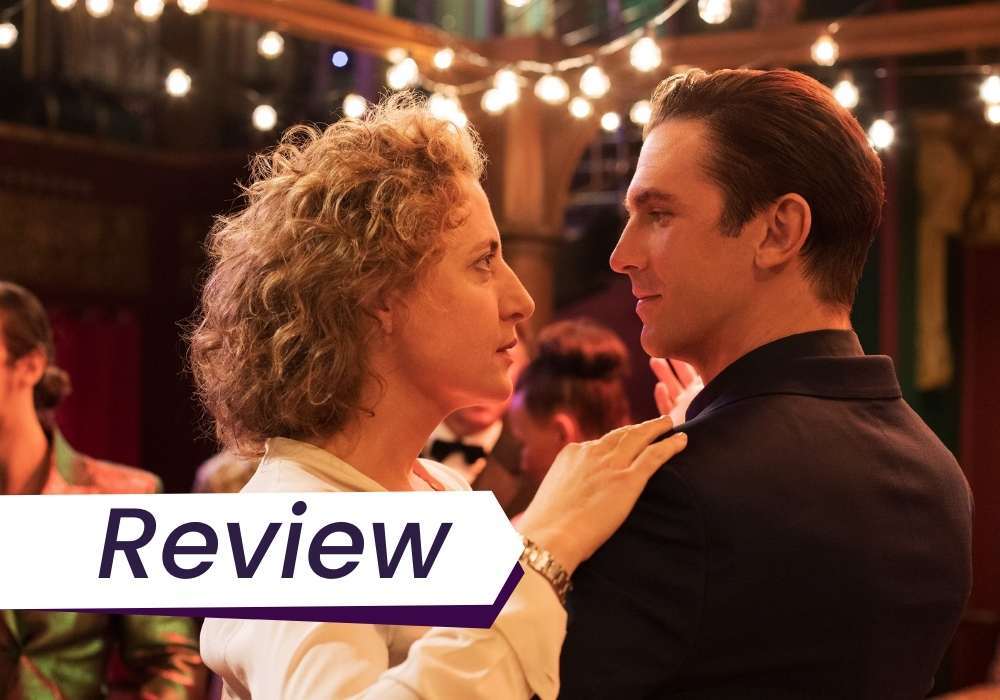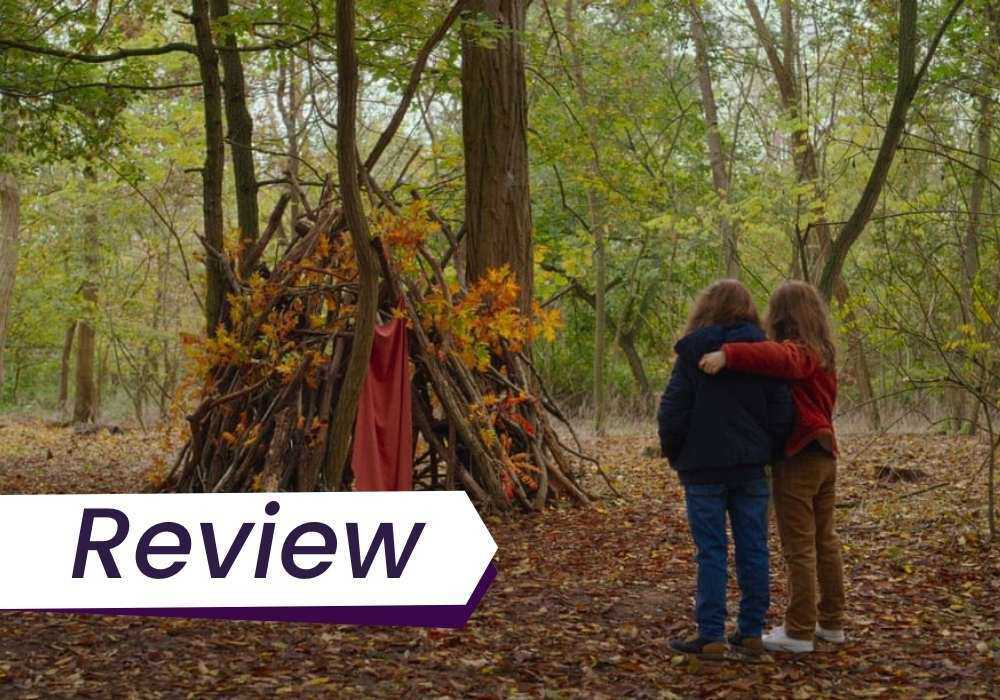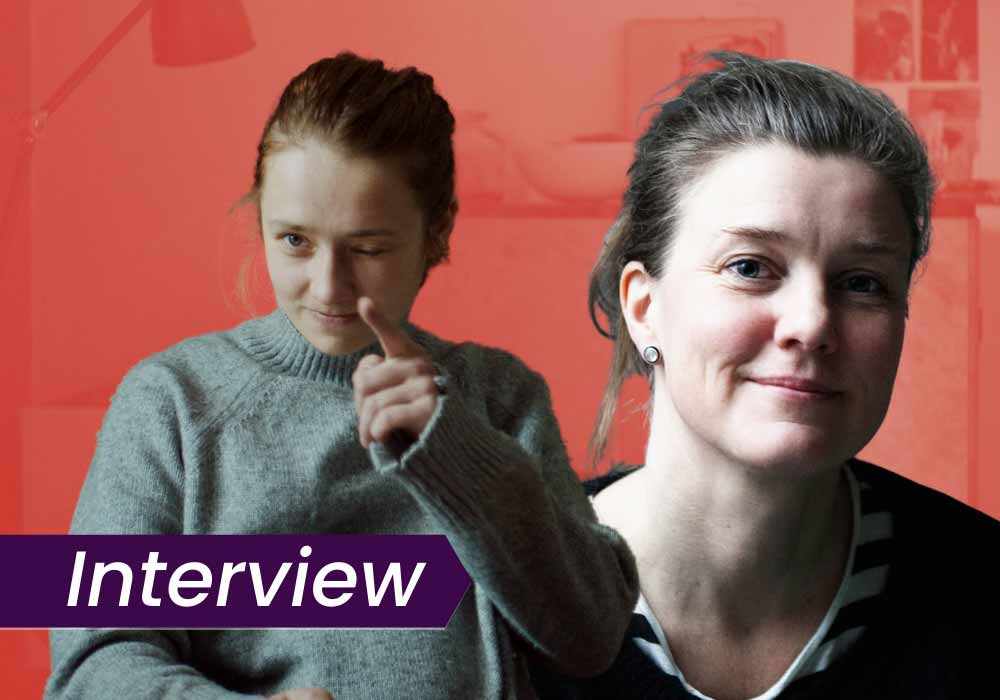Writer-director-editor Aleksandre Koberidze’s Berlinale film, What do we see when we look at the sky?, chronicles small pleasures in the life of a city.
The film is now playing in US theatres and will arrive on Mubi in North America later this year. This review was originally published on March 7, 2021 as part of our Berlinale coverage.
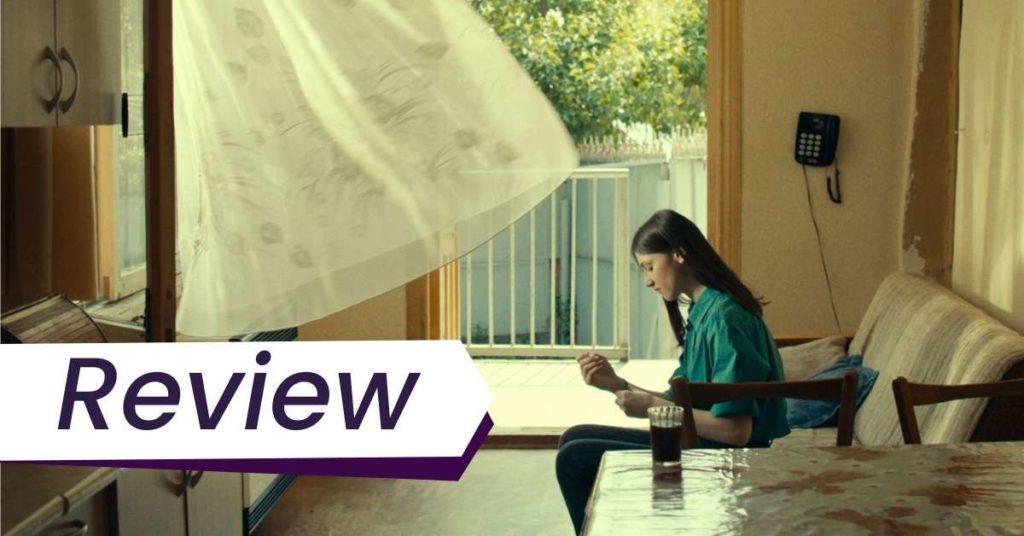
Discover one film you didn’t know you needed:
Not in the zeitgeist. Not pushed by streamers.
But still easy to find — and worth sitting with.
And a guide to help you do just that.
A couple’s meet cute unfolds from the calves down, as we watch their shoes face each other, and hesitantly move. The end of a soccer match is signalled by the pile up of dirty jerseys in the locker room. A woman says hello to her roommate with a delicate brush to her head, which is resting on a table. These are the kinds of moments that writer-director-editor Aleksandre Koberidze chronicles in What do we see when we look at the sky? At once a portrait of the Georgian city of Kutaisi — its inhabitants, streets, gathering places — and an exercise in telling this story episodically, through vignettes with minimal dialogue and often without faces. When the meet-cute couple, Lisa (Ani Karseladze and Oliko Barbakaze) and Giorgi (Giorgi Ambroladze and Giorgi Bochorishvili), wake up one day and find themselves in different bodies, it barely phases us as strange, because Koberidze encourages us to focus on the small details rather than the big ones.
Koberidze repeatedly changes the rules on us for what we should expect from the film. The opening scene finds many people gathering around and moving through a street, as we wait for the camera to land on a face. Instead, it lands on two pairs of shoes for a meet-cute. The first few scenes follow the daily routines of Lisa and Giorgi, but Koberidze’s editing is jagged and unpredictable, cutting scenes off earlier than expected, and fading to black. It’s not until several minutes in that the narrator (voiced by the director himself), who will be our guide throughout the rest of the film, unexpectedly shows up as Lisa and Giorgi pass each other at night in a wide shot so far back that we can barely make out their figures. Koberidze has the narrator tell us what’s happening between them rather than letting us hear their dialogue or see their reactions; we can only see how they manage the space between them.
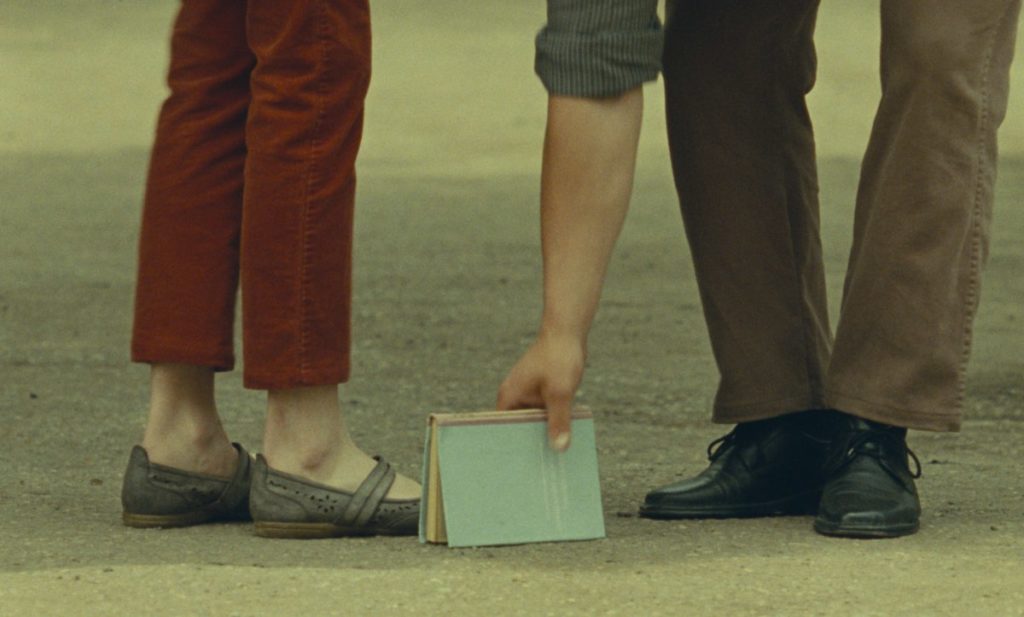
Koberidze tends to keep his camera at a distance, favouring wide shots from afar of people interacting, or closeups of elbows hitting each other among people gathered around to watch a soccer game. It serves to somewhat alienate us from the two main characters, because the film isn’t really about Lisa and Giorgi. Instead, it’s about the interactions between people across the city. Koberidze finds poetry and meaning in what we usually don’t look at by avoiding the stuff of narrative storytelling: dialogue and faces. That also leaves room for flights of fancy that we’re more willing to accept because we’re watching these characters as if from a god’s eye view. We accept that dogs are soccer fans and each loyal to a particular venue. Or that it’s a security camera, a drain, and a sapling — each seen in closeup because they’re so easily ignored otherwise — that warn Lisa of a curse. Occasionally, Koberidze heads into post-modern meta territory that makes the film feel like Tristram Shandy; Koberidze literally tells us how to watch the film, with flashing instructions on screen. For an added meta element, there’s also a subplot about a documentary filmmaker making a film about couples.
What draws the city together is their excitement over the World Cup. There’s a match on the first night Giorgi offers to walk Lisa home, and she notices him wondering what’s happening in the game. She offers to let him go and watch, but we understand his devotion because he turns the offer down, preferring to spend time walking and talking, though we’re always too far away to hear the rest of their conversation. Koberidze takes us to the key venues where people gather for soccer matches by following different dogs en route to their favourite spots. And one sequence, at the halfway point in the film, features a joyous soccer match somewhat reminiscent of the one without a ball in Timbuktu. The match ends with the ball being accidentally kicked into a stream, disappearing forever. With each of these sequences, Koberidze reminds us of the fragility of these moments, asking us to take time to appreciate small pleasures we might otherwise ignore.
It’s also a tough watch, perhaps deliberately, because to see the world through Koberidze’s eyes is to struggle to see it differently. To accept the lack of plot, the sometimes seemingly disconnected sequences, and then enjoy the recurrence of images — soccer jerseys accumulating, people gathering, stairs climbed. It’s a testament to how often Koberidze makes this work worthwhile that, despite falling asleep twice in the process of watching the film, I went back and filled in the blanks. And it was rewarding, cementing common threads I might otherwise have missed, even if Lisa and Giorgi weren’t developed much further than they were in the opening scenes.
You could be missing out on opportunities to watch great films like Berlinale highlight What do we see when we look at the sky? at virtual cinemas, VOD, and festivals.
Subscribe to the Seventh Row newsletter to stay in the know.
Subscribers to our newsletter get an email every Friday which details great new streaming options in Canada, the US, and the UK.
